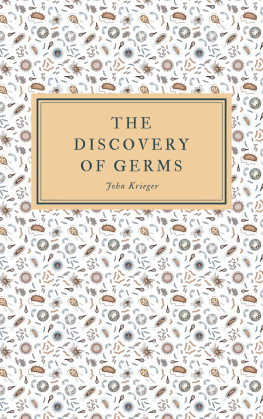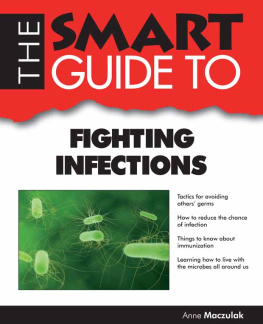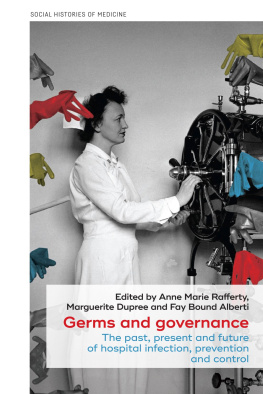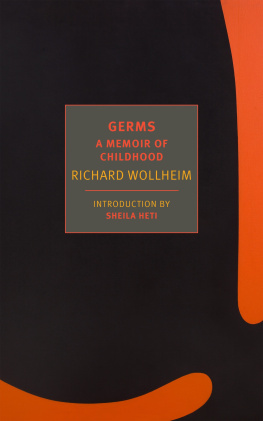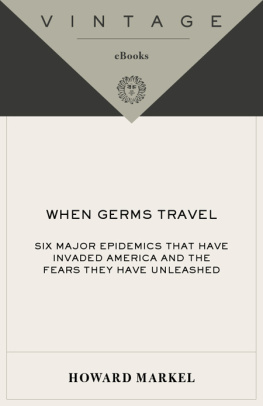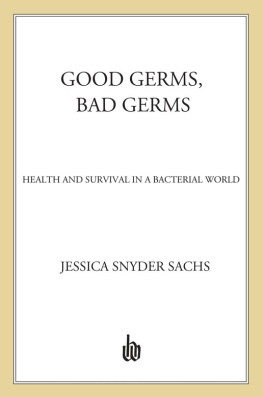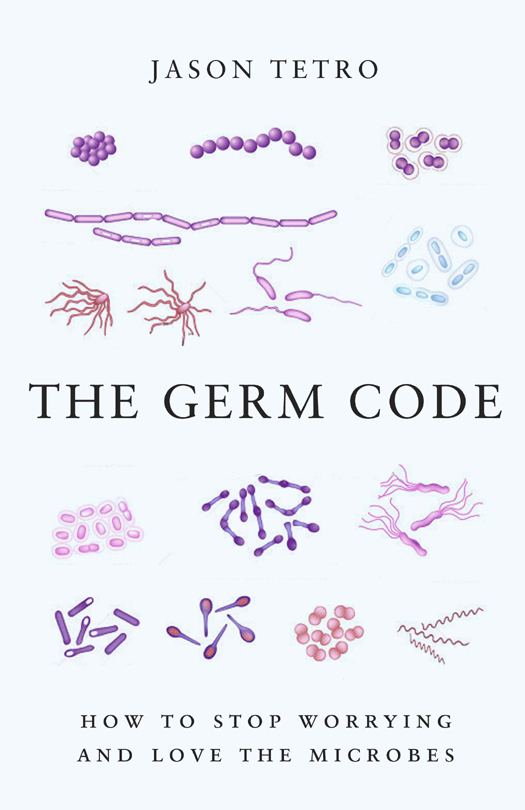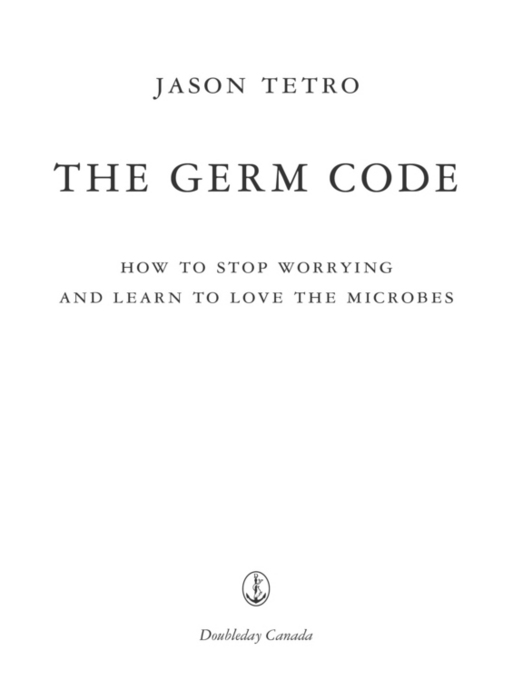THE GERM CODE
COPYRIGHT 2013 JASON TETRO
All rights reserved. The use of any part of this publication, reproduced, transmitted in any form or by any means electronic, mechanical, photocopying, recording or otherwise, or stored in a retrieval system without the prior written consent of the publisheror in the case of photocopying or other reprographic copying, license from the Canadian Copyright Licensing agencyis an infringement of the copyright law.
Doubleday Canada and colophon are registered trademarks
Library and Archives of Canada Cataloguing in Publication is available upon request.
eISBN: 978-0-385-67854-4
The headings for were replicated from images courtesy of The Centers for Disease Control Prevention: Larry Stauffer and Charles D. Humphrey, respectively.
The heading for )], via Wikimedia Commons.
The heading for )], via Wikimedia Commons.
Cover design: CS Richardson
Illustration on cover, :
Alila Medical Images / Shutterstock.com
Published in Canada by Doubleday Canada,
a division of Random House of Canada Limited
www.randomhouse.ca
v3.1
To my parents, Peter and Patricia Tetro
CONTENTS
INTRODUCTION
The most important relationship in each of our lives is with germs. They are with us from the moment we are born until our last breath. They surround us, outnumber us, live on and in us, and interact with us, both to our benefit and our detriment. They are essential to keep us healthy, and at times they happen to make us sick and possibly threaten our lives. Yet, despite playing such a pivotal role in our existence, germs are often forgotten or even ignored by us, and we spend little to no time building a lasting bond with them.
Can we be blamed? Not really. Building a successful and balanced rapport between two humans can be difficult enough, never mind a population of unseen entities. For millennia, philosophers, psychologists and communication experts have struggled to explain how we develop and maintain our various connections, both with people and the environment.
Simply defining such a relationship can present a significant challenge. One way to summarize our shared life with germs stems from the work of American author and relationship counsellor John Gray. In the 1990s, he offered what was to become a hugely popular perspective on how humans interrelate. His titular theory, Men Are from Mars, Women Are from Venus, has since entered common parlance in discussing the discordance between men and women. As for our existence with germs, a different sort of planetary metaphor might be used to describe how we coexist with microbes: Humans Are from Earth, Germs Are from Uranus.
The pun is biologically correct, but only up to a point. Germs happen to be found everywhere, and they play an integral role in every aspect of human existence. The sheer ubiquity of germs and humans demands a properly managed coexistence. But since the dawn of humanity, our relationship has been fraught at best. Our history is replete with stories of a love-hate connection that never seems to be balanced. As Gray pointed out in his book, the reason for imbalance stems not from the fact that the two parties are a bad match, but from a mutual lack of understanding of their fundamental differences. As a result, perceptions become lopsided, and rather than developing a coexistence, men and women come into opposition and, eventually, unnecessary war.
In this regard, the balance between humans and germs was doomed from the start, as we didnt realize germs existed until the seventeenth century. We did, however, know the consequences of their presence, manifested in outbreaks, epidemics and pandemics. But before these microscopic creatures were seen under the microscope, their actions were explained in an almost religious way, as if ethereal or otherworldly beings were responsible for the disruption to human existence. Even when the godly or alien context was put to rest, germs were regarded not as entities but as phenomena, such as miasma, or bad air. Should miasma make an appearance in ones village, death would surely follow.
When germs were eventually recognized as the cause of infectiona momentous occasion some two hundred years after their discoverywe did not marvel at the revelation, nor did we devote the majority of our efforts to understanding the fundamentals of germy life. Instead, we went on the offensive in the hope of ridding the earth of these supposed killers.
This warlike mentality grew over the decades that followed, fostered by negative attitudes towards them in literature, film and other media. While the goal might have been to exploit the publics fear of the unknown, the consequence was our continual inability to think of germs as fellow inhabitants of the earth who deserve respect.
Today, we live in a more enlightened world where our information about germs, while not complete, is still robust enough to give them a second look. We have just as much information on their positive and beneficial contributions to our lives as we do their harmful impact. We have gained an understanding of how they live in the environment and how they interact with us.
They are not always causing infection. Some people have even harnessed germs to help humanity, developing medicinal and nutritional products that improve human health and our environment. Our world has begun to see how achieving coexistence is far more important than the futile attempts at total eradication.
As Gray and so many others have pointed out in their treatises, theses, essays and books, a successful, balanced relationship requires, first, knowledge of the fundamentals that form the basis of a persons actionsotherwise known as the codeand, second, the application of that code in everyday life. The code is usually simplisticfor example, Mars/Venuswhile the application requires study and understanding. Consider the most basic code of human relationships, the alphabet. English is one of the languages based on the twenty-six letters of the Latin alphabet. Yet presenting someone who does not speak English with the following:
ABCDEFGHIJKLMNOPQRSTUVWXYZ
will do little to provide that person with the ability to communicate. Understanding the application of this code, howeverincluding the development of words, the use of grammar and proper pronunciationwill. As anyone who has learned how to speak a language realizes, the knowledge of the code may be fairly easy, but learning how to understand and master its application can be a lengthy, and at times frustrating, experience. Moreover, when presented with the fact that the same code can be applied in a different manner to create entirely different languages, one can see that understanding a code is nothing without knowing how it is applied.
If asked what the germ code might be, most people would probably say something like They make us sick and can kill us. While not entirely incorrect, this is a rather limited view of the nature of germs in the world. For the most part, germs are no different from other creatures that share the earth with usincluding insects, which also are generally maligned. Many of us see insects and germs as our mortal enemies, continual nuisances at best, or even predators. But of course, insects are simply looking for food and shelter wherever they can find it. The fact that they tend to like the stores of human foodwhich includes, for some, human bloodas well as the relative comfort of human abodes, does not make them heinous in any way.


